We have had a lot of rain this summer, and it has been a terrific year for mushrooms. Our woods has many species, some growing in places where we have never before seen mushrooms in our 25 years of residence here.
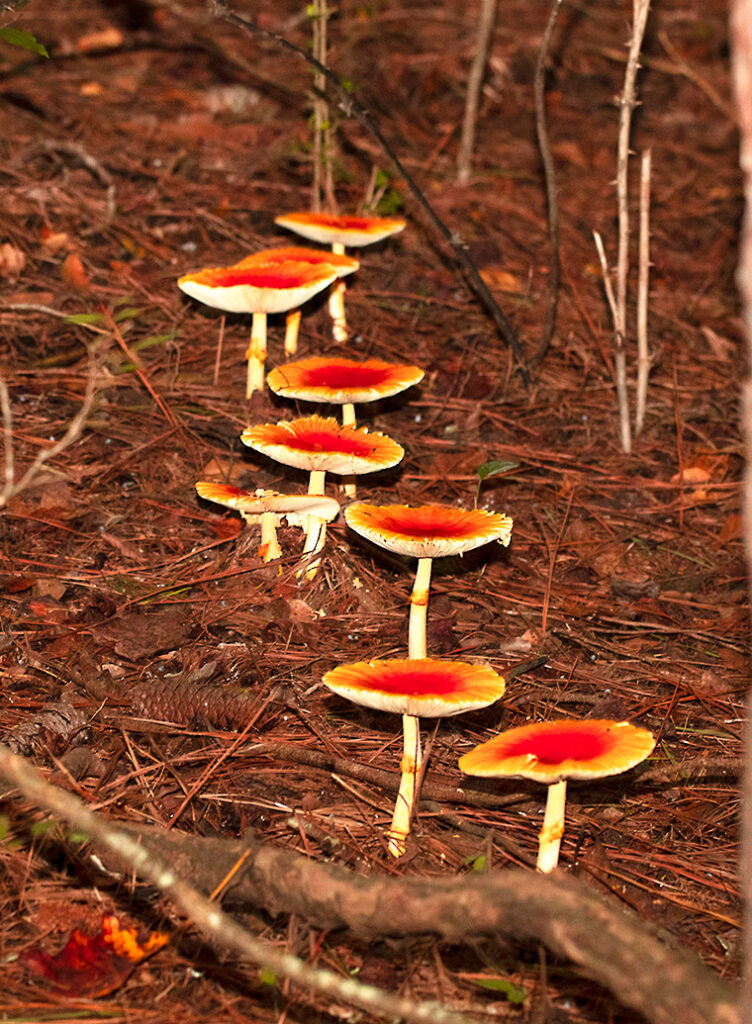
One of the most spectacular of these have been species of Amanita1, commonly known as “Caesar’s Mushroom”.
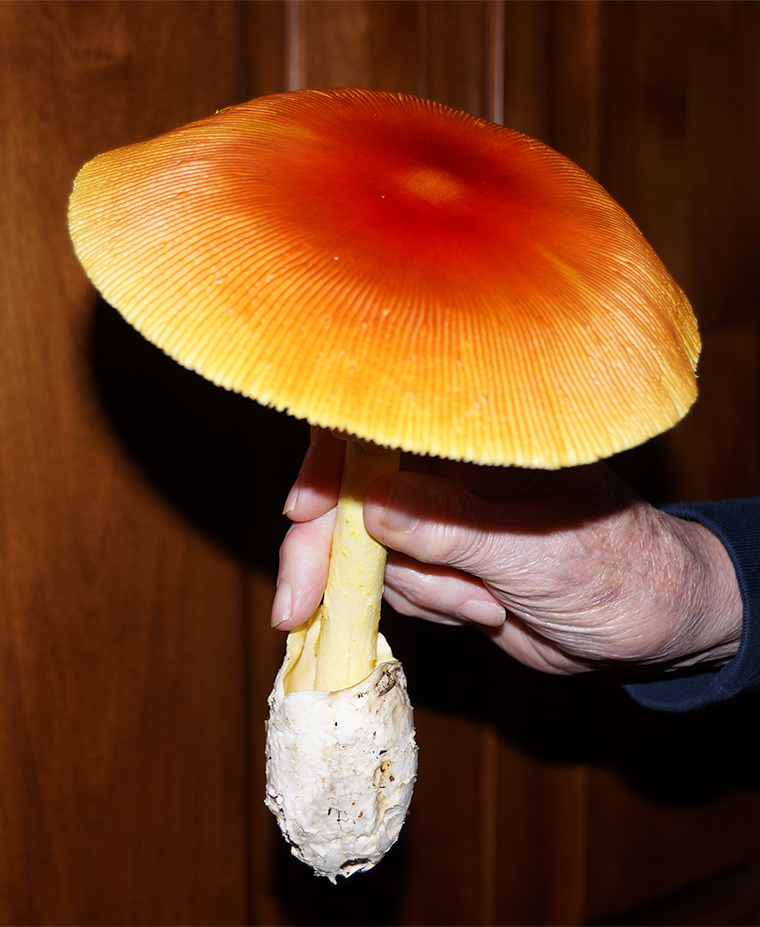
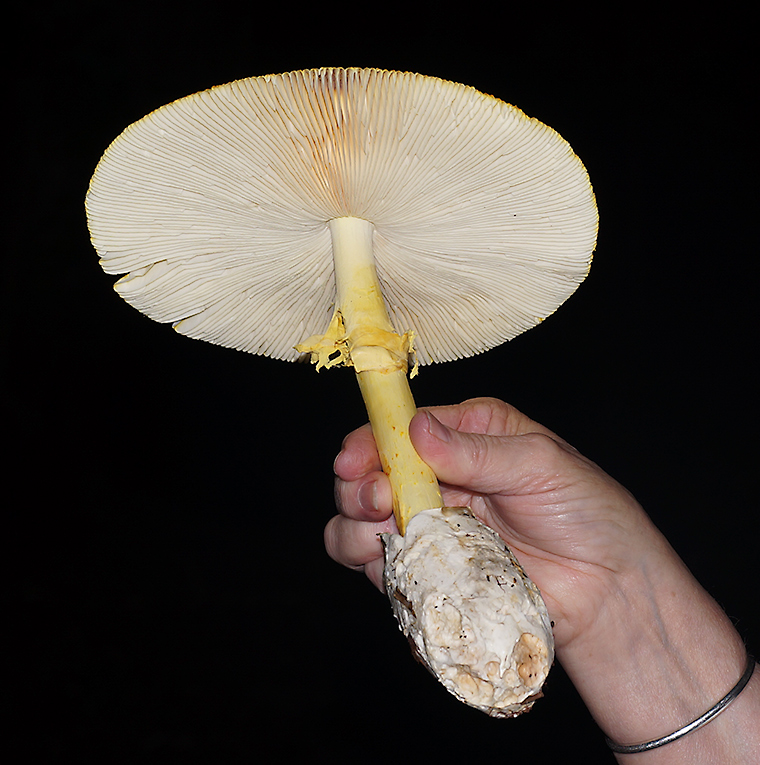
These are handsome, large mushrooms. The two photographers above show the main features of these mushrooms. They develop underground in sack-like structure called a volva. This structure can be seen at the base of the mushroom pictured above. When they begin to emerge from the ground, they burst through the volva. The second photograph shows a membraneous structure further up toward the cap and surrounding the stalk. This is called a partial veil. It is the remains of a membrane that covered the gills when the mushroom first emerged (a veil). When the cap opened up as the mushroom matured, the membrane was ruptured. The partial veil is the remains of the membrane.
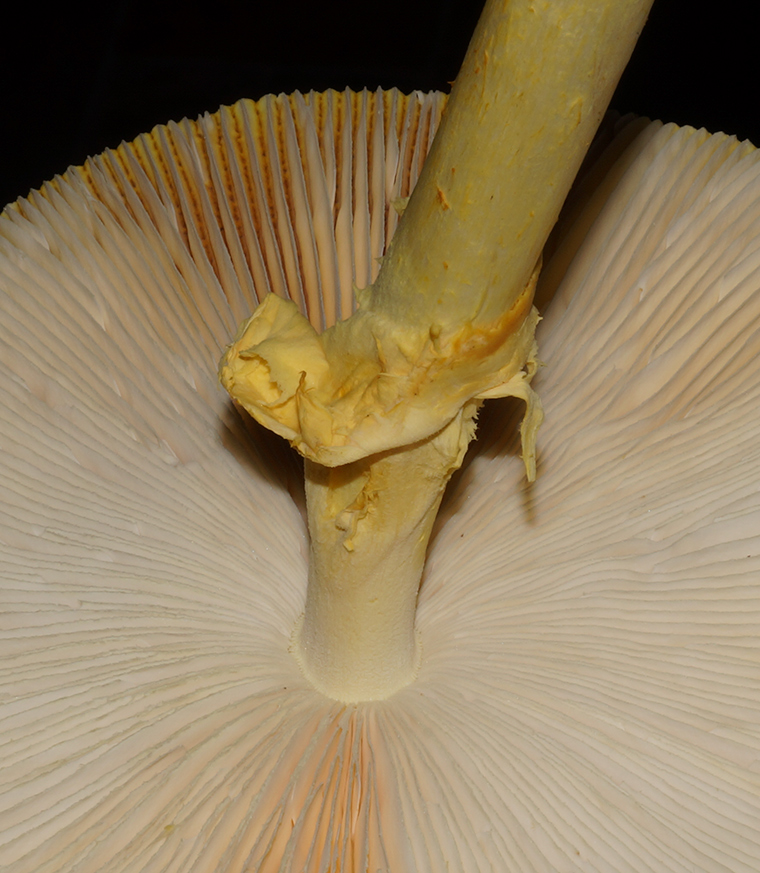
The photograph above shows a closer view of the partial veil and the gills which it formerly covered.
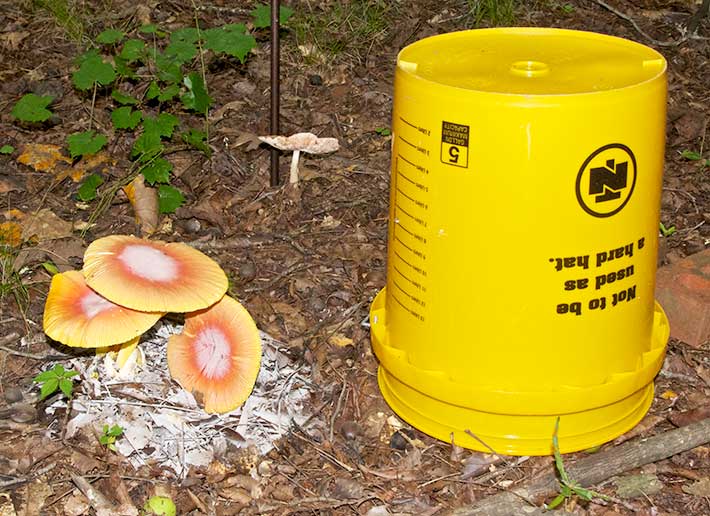
Mushrooms reproduce in part by the release of spores from their gills or pores. To produce the photograph above, I covered a group of Aminitas with a bucked overnight. From this photograph one can get an idea of the prodigious number of spores produced by these mushrooms. I have previously published this photograph in a prior post (https://www.gkochert.com/spore-power/), I liked it so much I decided to publish it again here).
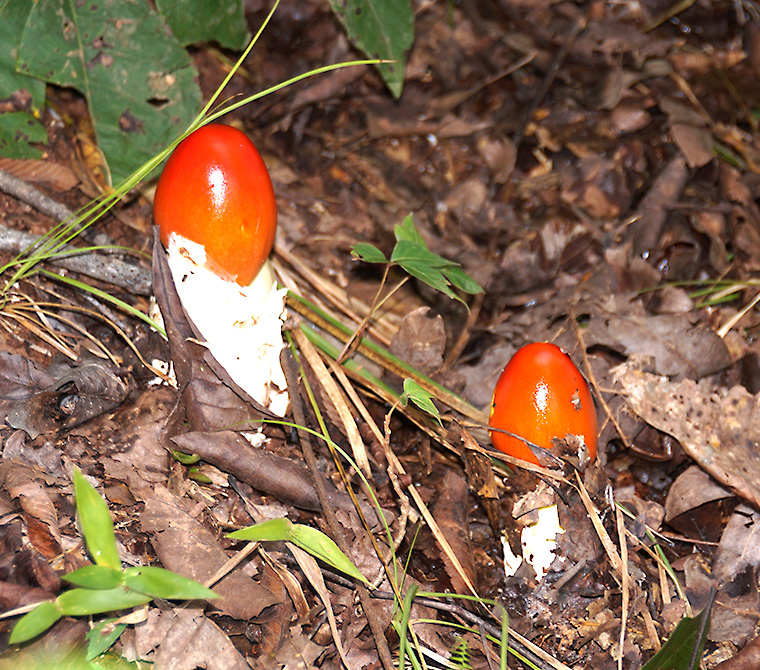
When Caesar’s mushrooms first emerge from the ground, they look like brilliant red Easter Eggs. These two have just burst their volvas, and are beginning to elongate.
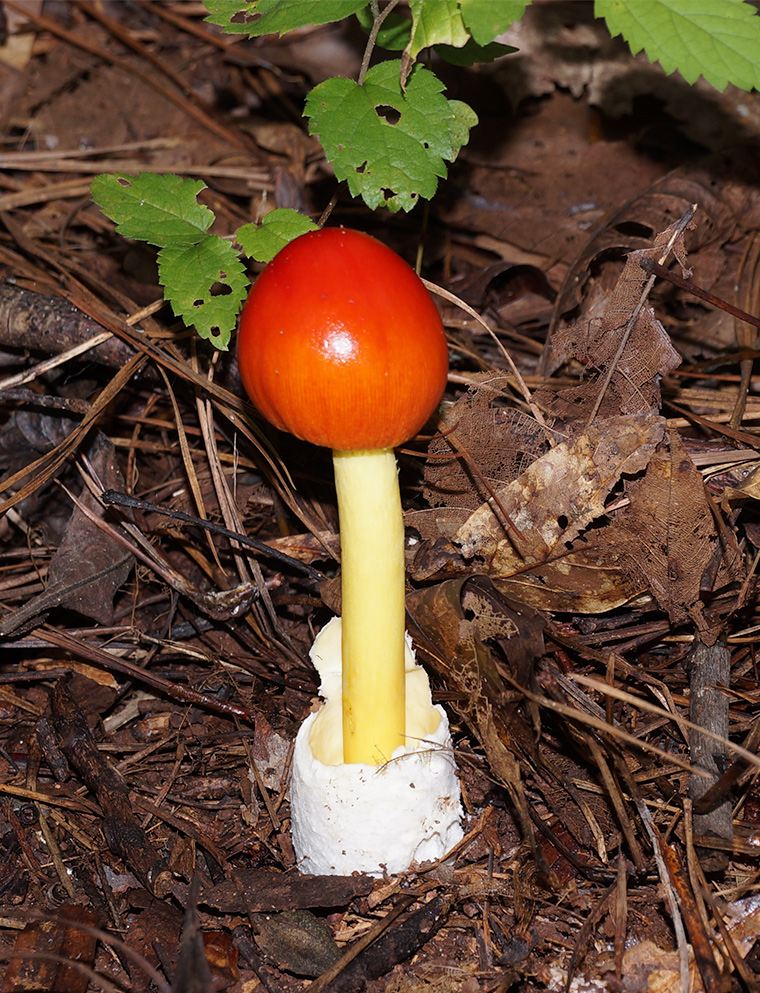
Here is a Caear’s mushroom which has begun to elongate. The ruptured volva is evident at the base of the elongating stalk.,
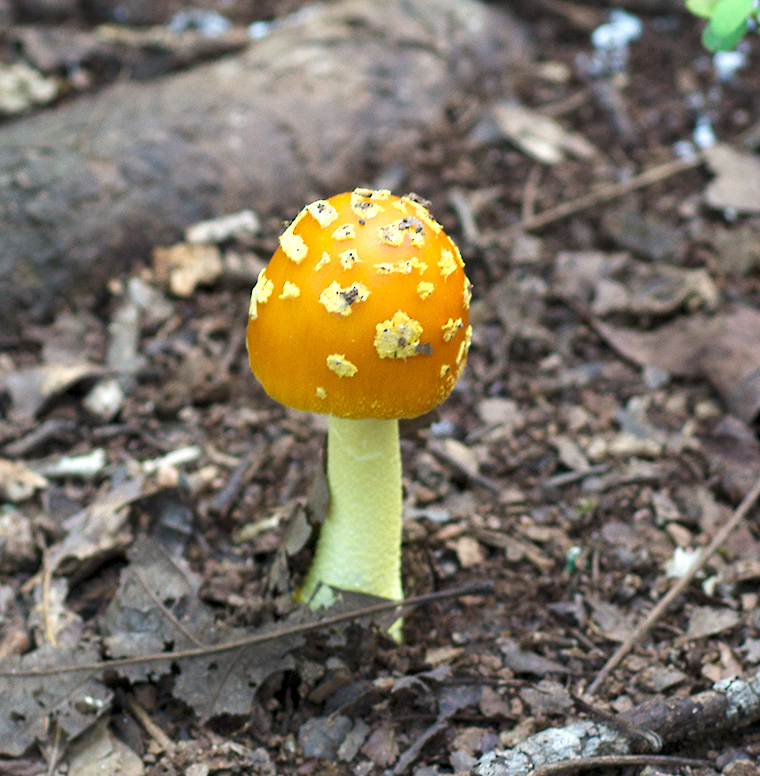
Here is another type of mushroom that appeared this year in our woods. I believe this is Amanita muscaria, the fly agaric. This species is both POISONOUS AND HALLUCINOGENIC! It is famous for its hallucinogenic effects and has been widely experimented with in both the East and the West. Certain Siberian native peoples have used it in ceremonies for hundreds of years. One interesting fact: the hallucinogenic compound (muscimol) survives its passage through the human body and is excreted in the urine. Certain Siberian people recycle the compound by drinking their own urine!.
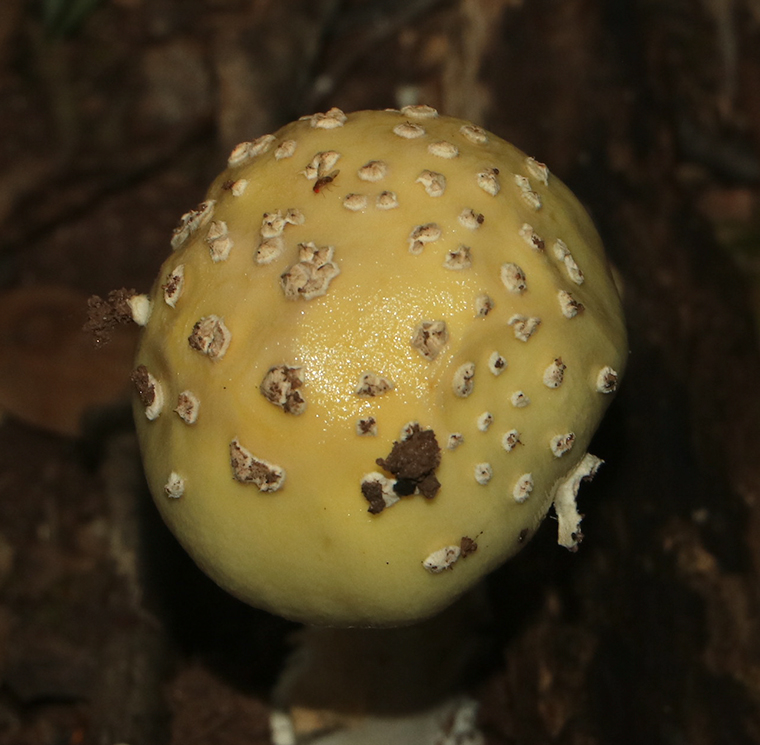
The warts or scales on the cap make this Amanita unmistakable.
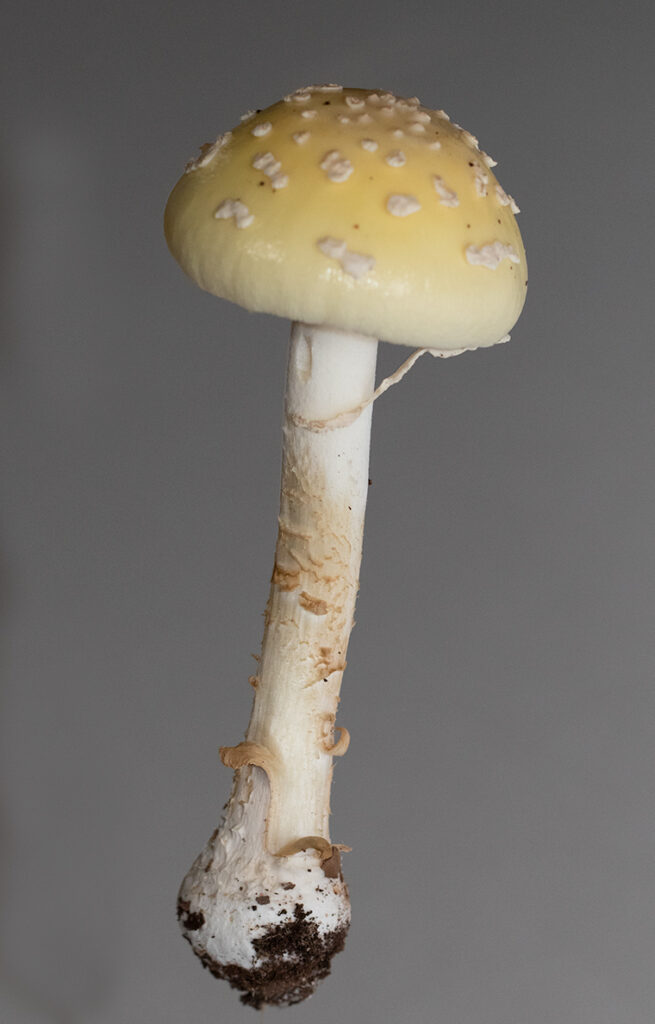
Here is a photograph of an entire Amanita muscaria mushroom. Note that the volva is much less robust than that of the red-capped form.
1The taxonomy of the genus Amanita has recently been reexamined on the basis of new evidence. For example, the red-capped form, which features prominently in tiis post, was formerly known as A, caesarea, and older mushroom field guides still call it that. There is an A. caesarea which was first described in Europe, and it has been well-known for a long time. It is considered a choice edible, and there are records of Roman Emperors, probably including Julius Caesar (hence the name) enjoying this mushroom. When very similar American forms of Amanita were found, they were so similar to the European A, caesura that they were assumed to be conspecific. However, recent research has indicated that the American forms are in fact, different species. The form in this blog has been called A, jacksonii in some texts and A. hemibapha in others. We await a final decision.

Thanks Gary! Always interesting.